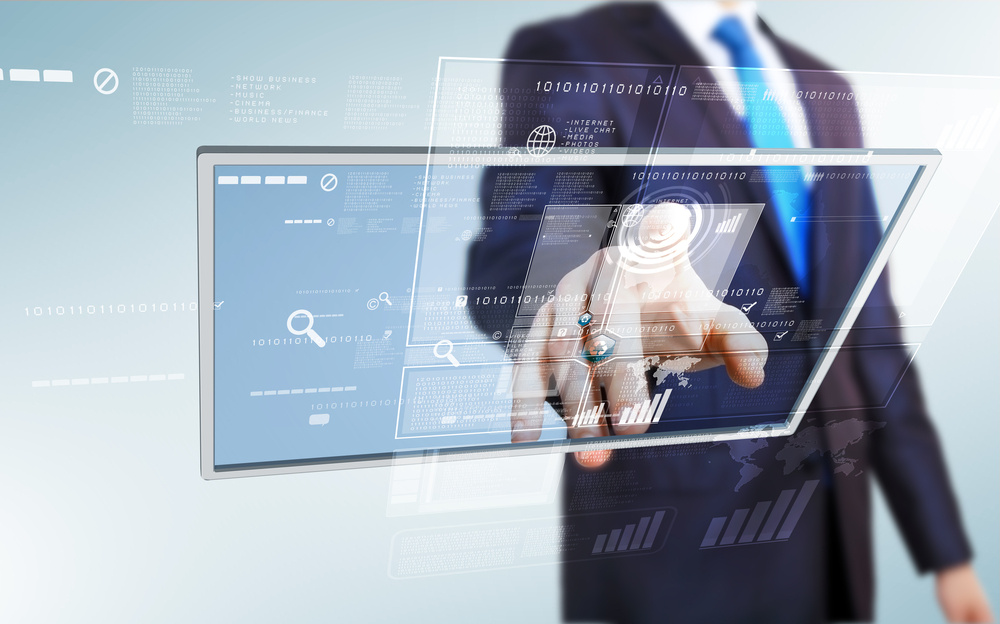Latest Trends in the $55.25 Billion Surface Computing Industry
Surface computing technologies offer a revolutionary approach to human-computer interaction by using natural user interfaces for direct manipulation of digital content through touch and gestures.

These innovative surfaces aim to mimic the simplicity of interacting with everyday objects and are utilized in various industries, including retail, healthcare, entertainment, and education. They provide tailored solutions to meet specific user needs, promoting engagement and collaboration. With advancements in technology and a focus on user-friendly interfaces, the surface computing market is growing significantly. By enhancing user experience, productivity, and accessibility, surface computing is driving innovation in digital interactions and has the potential to redefine digital technology, making it more intuitive and accessible to a wider audience. According to BIS Research, the global surface computing market is projected to reach $9,83,052.4 million by 2033 from $55,250.0 million in 2023, growing at a CAGR of 33.24% during the forecast period 2024-2033. Here, we explore some of the most trending topics in surface computing today. Multi-touch technology is a cornerstone of surface computing, enabling users to interact with devices using multiple fingers simultaneously. Recent advancements have led to more responsive and accurate touch sensors, resulting in smoother and more intuitive user experiences. Innovations like pressure sensitivity and palm rejection have further enhanced multi-touch screens, making them ideal for creative applications such as digital art and design. Interactive display tables are gaining traction across various industries, from retail to education and healthcare. These tables allow multiple users to interact with digital content simultaneously, facilitating collaborative activities and engaging learning experiences. For instance, in retail, interactive display tables provide detailed product information and personalized recommendations, enhancing the shopping experience. In education, they offer dynamic and interactive ways to teach complex subjects, making learning more engaging and effective. Integrating surface computing with smart home devices is creating new possibilities for home automation. Interactive surfaces can serve as control hubs for managing various smart devices, from lighting and climate control to security systems. This seamless integration allows users to interact with their smart home environment in more intuitive and efficient ways, simplifying everyday tasks and enhancing convenience. The convergence of augmented reality (AR) and surface computing is paving the way for immersive experiences that blend the physical and digital worlds. By overlaying digital information onto real-world surfaces, AR enhances the functionality and interactivity of surface computing devices. This combination is particularly useful in fields like architecture, where users can visualize and interact with 3D models directly on a tabletop, providing a more tangible understanding of spatial relationships and design concepts. Surface computing is transforming collaborative workspaces by enabling more dynamic and interactive forms of teamwork. Large interactive surfaces, such as digital whiteboards and tables, allow team members to brainstorm, share ideas, and work on projects together in real-time. These tools facilitate better communication and collaboration, making it easier for teams to visualize and organize their work, leading to more efficient and productive outcomes. Gesture recognition technology is increasingly integrated with surface computing devices, offering more natural and intuitive ways to interact with digital content. By recognizing hand movements and gestures, these systems provide touchless control of interactive surfaces, reducing the need for physical contact and enhancing user experiences in settings where hygiene is a concern, such as hospitals and public spaces. The healthcare industry is leveraging surface computing to improve patient care and streamline medical processes. Interactive surfaces can be used for medical imaging, allowing doctors to manipulate and analyze images with greater precision. They also enable more interactive patient consultations, where patients can visualize their medical conditions and treatment plans. Additionally, surface computing devices assist in medical training by providing realistic simulations and interactive learning tools. Haptic feedback technology is integrated into surface computing devices to create more engaging and tactile experiences. By providing physical sensations in response to user interactions, haptic feedback enhances the realism and immersion of digital content. This technology is particularly valuable in applications such as virtual reality and gaming, where tactile feedback can significantly enhance the user experience. Surface computing is revolutionizing education by offering innovative ways to engage students and enhance learning outcomes. Interactive surfaces provide hands-on learning experiences, allowing students to explore and interact with educational content in more meaningful ways. These tools support a wide range of subjects, from science and math to art and history, making learning more dynamic and accessible. As surface computing devices become more prevalent, concerns about data privacy and security grow. Ensuring that interactive surfaces are secure and that user data is protected is essential for maintaining trust and confidence in these technologies. Developers are implementing robust security measures, such as encryption and secure authentication, to address these concerns and safeguard user information. Artificial intelligence (AI) enhances the capabilities of surface computing by enabling more intelligent and personalized interactions. AI-powered surface computing devices can learn from user behavior and preferences, providing more relevant and customized experiences. For example, AI can optimize the layout of interactive content based on user interactions, making it easier to access and navigate digital information. The retail industry is increasingly adopting surface computing to create more engaging and interactive shopping experiences. Interactive displays provide detailed product information, personalized recommendations, and virtual try-on experiences, helping customers make more informed purchasing decisions. These technologies also streamline retail operations by enabling more efficient inventory management and customer service processes. Surface computing opens new possibilities in the gaming industry by providing more immersive and interactive gameplay experiences. Multi-touch surfaces and gesture recognition technologies allow players to interact with games in more intuitive and engaging ways. Additionally, haptic feedback enhances the realism of gaming experiences by providing tactile sensations in response to in-game actions. Wearable devices with surface computing capabilities are emerging as a new trend, offering portable and interactive experiences. These devices, such as smartwatches and augmented reality glasses, allow users to interact with digital content on the go, providing new opportunities for productivity, entertainment, and communication. As the demand for surface computing devices grows, so does the importance of sustainability in their development and deployment. Manufacturers are increasingly adopting eco-friendly practices, such as using recyclable materials and reducing energy consumption, to minimize the environmental impact of these technologies. Sustainable surface computing solutions are not only better for the environment but also appeal to consumers who prioritize eco-conscious products. As these trends develop, the potential for surface computing to enhance our everyday lives and various industries is limitless. About the Publisher: BIS Research is a global market intelligence, research and advisory company that focuses on emerging technology trends that are likely to disrupt the market. Its team includes industry veterans, experts, and analysts with diverse backgrounds in consulting, investment banking, government, and academia. Surface computing technologies offer a revolutionary approach to human-computer interaction by using natural user interfaces for direct manipulation of digital content through touch and gestures.
Surface computing technologies offer a revolutionary approach to human-computer interaction by using natural user interfaces for direct manipulation of digital content through touch and gestures.Advancements in Multi-Touch Technology
Interactive Display Tables
Surface Computing in Smart Homes
Augmented Reality (AR) and Surface Computing
Surface Computing in Collaborative Workspaces
Gesture Recognition and Surface Computing
Surface Computing in Healthcare
Haptic Feedback in Surface Computing
Surface Computing for Education
Privacy and Security in Surface Computing
AI and Surface Computing Integration
Surface Computing in Retail
Surface Computing for Gaming
Wearable Surface Computing Devices
Sustainability in Surface Computing

 Lynk
Lynk 































